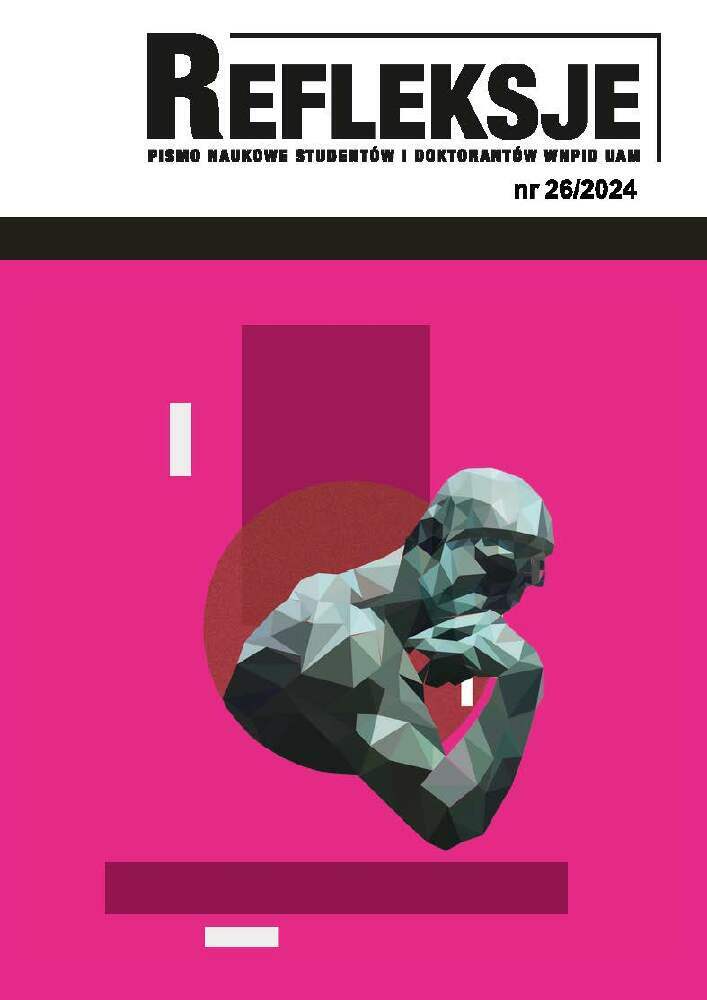Abstract
Despite the passage of many years since Tolkien’s death, the issues he raised in his books, primarily in the Lord of the Rings saga, remain relevant. The purpose of this article is to examine selected ideological themes raised by Tolkien and contemporary today. The authors present the feminist and environmentalist-naturalist themes presented by Tolkien in the face of the problem of unstoppable industrialization. These problems are still relevant in today’s world. For the research of the indicated contents, authors take a media studies framework (cultivation theory, parasocial relations, and modes of encoding and decoding content in terms of Stuart Hall) and an ethical framework (the dimension of ethics of concern).
References
Adamiak M., Derra A. (2020), Teorie feministyczne: tradycje i perspektywy, „Avant: Trends in Interdisciplinary Studies”, nr 11(3). DOI: https://doi.org/10.26913/avant.2020.03.22
Antosik M. (2014), Człowiek współczesny w obliczu manipulacji, „Warmińsko-Mazurski Kwartalnik Naukowy”, 39–49.
Baran S. J., Davis D. K. (2007), Teorie Komunikowania Masowego, Wydawnictwo Uniwersytetu Jagiellońskiego, Kraków.
Baratta C. (2011), Environmentalism in the Realm of Science Fiction and Fantasy Literature, Cambridge Scholars Publishing.
Burzyńska A. (2006), Gender i queer, w: A. Burzyńska, M. P. Markowski, Teorie literatury XX wieku, Wydawnictwo Znak.
Caughey J. L. (1984), Imaginary Social Worlds: A Cultural Approach, University of Nebraska Press.
Doliński D. (2002), Wpływ społeczny a jakość życia, „Psychologia Jakości Życia”, nr 1(1), s. 35–52.
Doughan D. (2008), Women, Oxford and Tolkien, “Mallorn: The Tolkien Society”, nr 45.
Gilligan C. (1982), In a Different Voice: Psychological Theory and Women’s Development, Harvard University Press, Cambridge.
Hannam J. (2007), Feminism, Routlege.
Hannam J. (2010), Feminizm, Zysk i S-ka.
McQuail D. (2007), Teoria Komunikowania Masowego, Wydawnictwo Naukowe PWN, Warszawa.
Noddings N. (1984), Caring: A Feminine Approach to Ethics & Moral Education, University of California Press, Berkeley, California.
Piontek D. (2011), Komunikowanie polityczne i kultura popularna. Tabloidyzacja informacji o polityce, Wydawnictwo Naukowe WNPiD UAM, Poznań.
Rubin A., Perse E. M. (1987), Audience Activity and Soap Opera Involvement A Uses and Effects Investigation, “Human Communication Research”, vol. 14, Issue 2, s. 246–268. DOI: https://doi.org/10.1111/j.1468-2958.1987.tb00129.x
Simonson M. (2009), Myth and Magic: Art according to the Inklings (review), „Tolkien Studies”, 6(1), s. 277–283. DOI: https://doi.org/10.1353/tks.0.0052
Tolkien J. R. R. (2000), The Letters of J. R. R. Tolkien, Christopher Tolkien, Houghton Mifflin.
Tolkien J. R. R. (2008), Władca Pierścieni, Zysk i S-ka, Poznań.
Trębicki G. (2020), Świat wartości. Aksjologia fantasy świata wtórnego. Model podstawowy, Uniwersytet Jana Kochanowskiego, Kielce.
License
Copyright (c) 2024 Aleksandra Konieczna, Mikołaj Sokolski

This work is licensed under a Creative Commons Attribution 4.0 International License.

